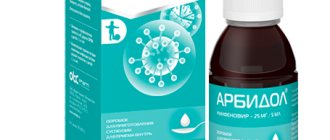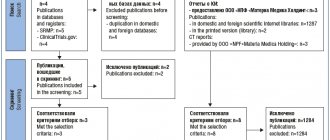The Sovigripp vaccine has been produced in Russia since 2013, so by now a lot of clinical experience has been accumulated in its use. This is a three-component vaccine - in other words, it contains three inactivated influenza strains (2 types A and 1 type B), which, according to WHO forecast, will be the most common in the coming season. Protection lasts for a year, efficiency is up to 90%. Ministry of Health of Russia, clinical studies were carried out jointly with the Federal State Budgetary Institution "Research Institute of Influenza" of the Ministry of Health of Russia, the results can be found here
Should you get a flu vaccine in September?
On average, it takes about two weeks to develop immunity, so adults are most often vaccinated against influenza in October - at the beginning of the seasonal epidemic. However, for children, two different protocols are used depending on age: if the child is over 3 years old, he receives a dose of 0.5 ml once. Children from 6 months to 3 years are given 2 injections at least 4 weeks apart, each dose is 0.25 ml. Thus, in order for a young child to develop immunity by November, the first dose must be given in September. It is also necessary to take into account that the flu spreads most quickly in places where children gather, especially in preschool and school institutions. If a child attends kindergarten, school or clubs, it is also better to vaccinate him a little earlier in order to protect him already at the beginning of the rise in incidence.
Sovgripp ® inactivated subunit influenza vaccine
Trade name.
SOVIGRIP®
Group name.
Influenza vaccine [inactivated].
Dosage form.
Solution for intramuscular administration.
The vaccine is a surface glycoprotein (hemagglutinin and neuraminidase), isolated from purified influenza virus virions of types A and B, obtained from virus-containing allantoic fluid of chicken embryos from clinically healthy chickens using chicken erythrocytes or erythrocyte-free technology in the production process, and diluted in phosphate-saline buffer solution, in combination with the adjuvant SOVIDON. The flu shot is available with a preservative - thiomersal (merthiolate), or without a preservative.
The antigenic composition of strains changes annually in accordance with WHO recommendations.
Compound.
1 dose (0.5 ml) contains:
Vaccine with preservative
- hemagglutinin of influenza virus subtype A(H1N1) - 5 μg;
- hemagglutinin of influenza virus subtype A (H3N2) - 5 μg;
- hemagglutinin of influenza virus type B - 11 mcg;
- adjuvant SOVIDON™ - 500 mcg;
- preservative - thiomersal (merthiolate) - (50.0 ± 7.5) mcg;
- phosphate-buffered saline solution - up to 0.5 ml.
Vaccine without preservative
- hemagglutinin of influenza virus subtype A(H1N1) - 5 μg;
- hemagglutinin of influenza virus subtype A(H3N2) - 5 μg;
- hemagglutinin of influenza virus type B - 11 mcg;
- adjuvant SOVIDON™ - 500 mcg;
- phosphate-buffered saline solution - up to 0.5 ml.
Note. Composition of phosphate-buffered saline solution No. 1 (for the drug without a preservative):
9 g of sodium chloride, 1.5 g of sodium hydrogen phosphate, 0.12 - 0.14 g of potassium dihydrogen phosphate, water for injection up to 1 liter.
Composition of phosphate-buffered saline solution No. 2 (for a drug with a preservative):
9 g of sodium chloride, 1.5 g of sodium hydrogen phosphate, 0.12 - 0.14 g of potassium dihydrogen phosphate, 0.85 ml of thiomersal (merthiolate) solution 1%, water for injections up to 1 l.
Description.
Colorless or slightly yellowish transparent or slightly opalescent liquid.
Immunological properties.
The vaccine forms high specific immunity against seasonal influenza.
Pharmacotherapeutic group.
MIBP vaccine.
ATX code. J07ВВ02 Indications for the use of influenza vaccinations Sovigripp.
For active annual preventive immunization against seasonal influenza, a preservative-free vaccine is used in children from 6 months of age, adolescents and adults without any age limit, and in pregnant women in the 2nd-3rd trimester of pregnancy;
vaccine with a preservative - in adults over 18 years of age. The vaccine is especially indicated. 1. Persons at high risk of illness and complications in case of influenza:
- persons over 60 years of age;
children of preschool age. schoolchildren; - persons who often suffer from acute respiratory viral infections; - persons suffering from chronic somatic diseases, including diseases and malformations of the cardiovascular, respiratory and central nervous systems, chronic kidney diseases, metabolic diseases, diabetes mellitus, chronic anemia, allergic diseases (except for allergies to chicken proteins); congenital or acquired immunodeficiency, including infection with the human immunodeficiency virus; - pregnant women. 2. Persons who, due to the nature of their educational or professional activities, have a high risk of contracting the flu or infecting others with it:
- students;
— medical workers; — workers in the social sphere, management, education, services, public catering, transport, trade; - military personnel, police. Contraindications for use.
1. Allergic reactions to chicken protein or other components of the vaccine.
2. Severe post-vaccination reactions (temperature above 40 °C, the appearance of edema at the site of vaccine administration, hyperemia over 8 cm in diameter) or post-vaccination complications (collapse, non-febrile convulsions, anaphylaxis) to the previous administration of influenza vaccine. 3. Pregnancy (when using a vaccine with a preservative). 4. Age up to 18 years (when using a vaccine with a preservative). 5. Age up to 6 months. Temporary contraindications.
1. Acute febrile conditions, acute infectious and non-infectious diseases, including the period of convalescence.
Vaccination is usually carried out 2-4 weeks after recovery. 2. Chronic diseases in the acute stage. Vaccination is carried out during the period of remission. The possibility of vaccination of persons suffering from chronic diseases is determined by the attending physician, based on the patient’s condition. 3. For mild forms of acute respiratory viral and intestinal infections, vaccination is carried out after the temperature has normalized and/or the acute symptoms of the disease have disappeared. Method of administration and dose.
- Vaccination is carried out annually in the autumn-winter period.
- Vaccination is possible at the beginning of an epidemic rise in the incidence of influenza.
- For children over 3 years of age, adolescents and adults without age restrictions, the vaccine is administered once intramuscularly into the upper third of the outer surface of the shoulder (in the area of the deltoid muscle) in a vaccination dose of 0.5 ml.
- For children from 6 months to 3 years, the vaccine is administered twice with an interval of 4 weeks into the anterior outer surface of the thigh intramuscularly in a vaccination dose of 0.25 ml (1/2 dose) according to the following administration regimen:
1. From an ampoule containing 0.5 ml (1 dose) of the drug, 0.25 ml of the vaccine is taken with a sterile syringe that has the appropriate graduation. The remainder of the vaccine in the ampoule must be discarded immediately. 2. When using a syringe containing 0.5 ml of the drug, it is necessary to remove half of the contents by pressing the syringe plunger to the corresponding mark on the syringe. The remaining amount of vaccine (0.25 ml) is administered to the patient. The opening of ampoules and the vaccination procedure are carried out in strict compliance with the rules of asepsis and antiseptics. The drug cannot be stored in opened ampoules/syringes
.
is NOT SUITABLE
for use in ampoules with altered physical properties (color, transparency), damaged integrity and labeling, expired shelf life, violations of storage and/or transportation conditions.
Precautions for use.
- Do not administer intravenously!
- On the day of vaccination, those vaccinated must be examined by a therapist/paramedic with mandatory thermometry. At temperatures above 37 °C, vaccination is not carried out.
- Vaccination sites must be equipped with anti-shock therapy. The vaccinated person must be under medical supervision for 30 minutes after administration of the drug.
Symptoms of overdose, measures to assist in case of overdose.
Cases of overdose have not been established.
Side effect.
The vaccine is a highly purified drug and is well tolerated by those vaccinated.
The following reactions may develop: Very often (>1/10):
- local reactions: pain on palpation, induration, swelling and hyperemia of the skin at the injection site;
- systemic reactions: low-grade fever, malaise, headache, sore and sore throat, slight runny nose.
Often (1/10 -1/100):
- systemic reactions: dizziness, myalgia, arthralgia, abdominal pain, increased fatigue.
These local and systemic reactions are transient and disappear after 1-2 days without specific therapy. Very rare (< 1/10,000):
- with high individual sensitivity, allergic reactions may be observed: anaphylactic shock, angioedema, urticaria, rash (erythematous, papular), etc.
Interaction with other drugs.
The vaccine can be administered against the background of basic therapy for the underlying disease.
Vaccination in persons receiving immunosuppressive therapy may be less effective. The vaccine can be used simultaneously with other inactivated vaccines (with the exception of rabies). In this case, contraindications to each of the vaccines used must be taken into account; the drugs must be injected into different parts of the body with different syringes. Use during pregnancy and breastfeeding.
Data from clinical trials of the vaccine on pregnant women have shown that vaccination does not have a negative effect on the fetus, the body of the woman and the child and can be used during pregnancy.
Vaccination with this drug can be carried out starting from the second trimester of pregnancy. Experience with the use of inactivated influenza vaccines shows that vaccination of a woman during breastfeeding does not have a toxic effect on the child and can be used. The final decision to vaccinate pregnant and breastfeeding women should be made by a physician individually, taking into account the risk of contracting influenza and possible complications of influenza infection. Information about the possible effect of the drug on the ability to drive vehicles and machinery.
Not installed.
Release form.
Solution for intramuscular administration, 0.5 ml (1 dose) in ampoules or single-use syringes with a needle and protective cap.
10 ampoules each with instructions for use and an ampoule scarifier in a cardboard box (pack). 5 ampoules in a blister pack. 2 blister packs each with instructions for use and an ampoule scarifier in a cardboard pack. 10 ampoules in a blister pack. 1 blister pack with instructions for use and an ampoule scarifier in a cardboard box (pack). When packaging ampoules that have a break ring or a point for opening, an ampoule scarifier is not included. 1 syringe in a blister pack. 1 blister pack with instructions for use in a cardboard pack. 1 bottle with instructions for use in a cardboard pack. Expiration date.
1 year.
Do not use after the expiration date stated on the packaging. Transportation conditions.
Transport at temperatures from 2 to 8 °C.
Freezing is not allowed. Storage conditions.
Store at a temperature of 2 to 8 °C out of the reach of children.
Freezing is not allowed. Vacation conditions.
For medical institutions (vaccine in ampoules and disposable syringes). Available by prescription (vaccine in vials and disposable syringes). Registration certificate holder of JSC NPO Microgen Russia, 115088, Moscow, st. 1st Dubrovskaya, 15, building 2, tel. (495) 710-37-87, e-mail Organization receiving claims: JSC NPO Microgen Russia, 115088, Moscow, st. 1st Dubrovskaya, 15, building 2, tel. (495) 710-37-87, e-mail Manufacturer/production address: JSC NPO Microgen Russia, 450014, Republic of Bashkortostan, Ufa, st. Novorossiyskaya, 105, tel.; or FSUE SPbNIIVS FMBA of Russia Russia, 198320, St. Petersburg, Krasnoe Selo, st. Svobody, 52, tel., fax; or FORT LLC Russia, 390540, Ryazan region, Ryazan district, Okskoye s/p, 1z, tel..
Complaints regarding the quality of the drug, with the obligatory indication of the batch number and release date, as well as information about cases of increased reactogenicity or the development of post-vaccination complications, should be sent to the Federal Service for Surveillance in Healthcare (Roszdravnadzor) and to the organization receiving the claims, with subsequent submission medical documentation.






